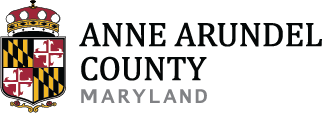By Steuart Pittman
We’re closing in on the end of year one, and we’ve made good progress.
Our first budget passed largely intact with long-overdue investments in education, public safety, and the environment, and we did it while keeping our taxes in the bottom quarter of Maryland counties.
We finally confronted our affordable housing crisis, with a workforce housing and a fair housing bill. We ended the divisive 287(g) immigrant screening program, and we let developers know that land use decisions will be made not based on who you know and whose campaign you fund, but on consistent enforcement of our county code.
And we are on the verge of a transition from being the state’s leader in development-driven forest removal to the leader in forest conservation.
Lots of other work has been done and much is in progress, but an important question to ponder is, what’s working? Why have we been able to move the needle on issues that have been challenging our county for decades?
Our number one asset is great staff. Nothing moves forward without talented, hard-working people who share a vision.
We also came in at the right time with the right message. People are fed up with traffic and overcrowded schools, and they are ready to do something about it. They want local government to step up and do its job.
And I can’t leave out the legislative body that actually passes the bills. We have a smart and very hard-working County Council that gets the job done.
But there is something else happening, and I think it’s what really counts. We are engaging people in what we are doing.
I’ve spent most of my adult life working to empower people through organizing. From my community organizing days in Chicago and Des Moines, to my work on behalf of farmers, to my efforts to secure the futures of ex-racehorses, every success came from the power wielded by large groups of people coming together with a shared goal.
As I look back on my first year as County Executive I am realizing that old habits linger. Every major success has been backed up by engaged residents.
People came out in huge numbers to advocate for smart investments at our seven Budget Town Halls, and again at County Council hearings. We also held two town halls on 287(g), a town hall on land use planning, a town hall to introduce our new planning officer, a town hall to introduce our health officer and health and human services deputy CAO, a north county public safety town hall, a forest conservation town hall, and most recently, a town hall on the redevelopment of Laurel Park.
When we weren’t organizing town halls we were engaging residents through new and rejuvenated task forces and commissions. We created a community-based Citizens Advisory Commission for land use, a Citizens Environmental Commission, a Gun Violence Prevention Task Force, a Mental Health Task Force with the Board of Education, a Stakeholders group to close the Student Achievement Gap, and a newly-empowered Human Relations Commission.
Where residents are already organized around issues, we meet with them, listen to them, and encourage them. It was the 500-person rally organized by Anne Arundel Connecting Together (ACT) that provided the springboard to success for our housing initiatives.
It’s a lot of work to govern this way. My staff spends a lot of evenings at community meetings, and so do I. But it’s the only way I’m comfortable operating in this job, and it seems to be working.
Therefore, I’ll repeat what I said in my inaugural address:
“If you want a voice in this government, you don’t get it by who you know or how much money is in your bank account. You get it by building community ... my advice is to organize. Find others with the same concerns. Bring them together and speak up. That’s how you create community and that’s how you get heard.”
So I’ll see you at the next meeting!


